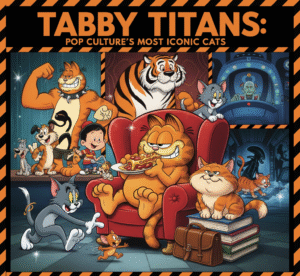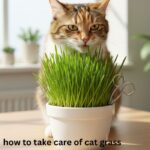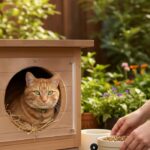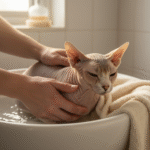Discover the most famous tabby cat characters like Garfield, Tom, Crookshanks, Heathcliff, Oliver, Hobbes, Nermal, Spot, Jonesy, and more. Learn how these beloved tabby cats shaped pop culture with humor, mischief, and charm.
Introduction
When it comes to cats in popular culture, tabby cat characters have earned a special place in people’s hearts. From comics and cartoons to blockbuster movies and TV shows, these striped, orange, or gray feline icons have been entertaining us for decades. Whether lazy like Garfield, mischievous like Heathcliff, or adventurous like Oliver, each of these cats represents a unique personality that resonates with audiences worldwide.
In this article, we will explore the most famous tabby cat characters, their cultural significance, and the reasons why tabbies remain some of the most relatable pets in storytelling.
Garfield – The Lazy, Orange Tabby Comic Strip Cat
Garfield, created by Jim Davis in 1978, is perhaps the most recognizable tabby cat character of all time. This orange, lasagna-loving feline is famous for his sarcasm, laziness, and witty one-liners. Garfield’s personality reflects the inner desires of many humans—eating, sleeping, and avoiding work at all costs.
Why Garfield Stands Out
- Represents a universal love for food and comfort
- Satirizes modern human lifestyles
- Known across comic strips, TV shows, and even movies
Garfield’s iconic orange stripes cement him as a true cultural phenomenon in the tabby cat universe.
Tom (From Tom And Jerry) – A Classic Gray Tabby Cartoon Cat
Tom, from the legendary Tom and Jerry series, is another famous tabby cat character known for his endless rivalry with Jerry the mouse. First appearing in 1940, Tom is a gray tabby with striking stripes, always scheming and chasing but rarely succeeding.
Why Tom Remains a Classic
- Represents persistence despite failure
- Symbol of slapstick comedy
- His gray tabby design makes him instantly recognizable
Tom proves that not all tabbies are lazy—some are determined, even if hilariously unlucky.
Crookshanks (Harry Potter) – Hermione’s Half-Kneazle Tabby Cat
In the Harry Potter series, Crookshanks is Hermione Granger’s loyal pet, described as a ginger tabby cat with a squashed face. Part Kneazle, Crookshanks is highly intelligent, perceptive, and protective.
Why Crookshanks Is Unique
- Combines magical and real-world feline traits
- Plays a key role in identifying untrustworthy characters
- Embodies loyalty and cleverness
Crookshanks isn’t just a background character—he actively contributes to the magical storyline, proving the depth of tabby cat roles in fiction.
Heathcliff – Mischievous Orange Tabby From Comics And TV
Heathcliff, often compared to Garfield, is another orange tabby cat character who starred in comic strips and an animated TV series. Unlike Garfield, Heathcliff is more street-smart and mischievous, often causing trouble in his neighborhood.
Why Heathcliff Made an Impact
- Showcased the playful troublemaker side of tabbies
- Offered humor through pranks and antics
- Represented the “bad boy” version of Garfield
Heathcliff remains a nostalgic tabby cat icon from the 1970s and 1980s.
Oliver (Oliver & Company) – Disney’s Adventurous Orange Tabby Kitten
Disney’s Oliver & Company (1988) introduced audiences to Oliver, an adorable orange tabby kitten based on Charles Dickens’ Oliver Twist. This adventurous little cat navigates New York City with a group of street-smart animals.
Why Oliver Is Beloved
- Symbol of innocence and bravery
- Showcases loyalty and friendship
- Captures the spirit of Disney’s storytelling
Oliver’s orange tabby design makes him instantly lovable and relatable to cat lovers everywhere.
Hobbes (Calvin And Hobbes) – Tiger-Striped Tabby With Wit And Humor
Although Hobbes is often depicted as a tiger, his tabby cat character design mirrors the classic striped tabby pattern. In Bill Watterson’s Calvin and Hobbes, Hobbes is Calvin’s witty and thoughtful companion.
Why Hobbes Stays Timeless
• Blends imagination and reality
• Offers philosophical insights with humor
• Represents friendship and childhood imagination
Hobbes may not be a domestic tabby, but his stripes pay tribute to the patterns that inspired many feline characters.
Nermal from Garfield – the gray tabby often called the “world’s cutest kitten.”
Nermal, another character from Garfield, is a gray tabby cat known as “the world’s cutest kitten.” Constantly irritating Garfield with his charm, Nermal represents the playful, youthful side of tabby cats.
Why Nermal Is Important
• Represents eternal youth and cuteness
• Serves as Garfield’s rival in vanity
• Adds balance to Garfield’s laziness
Every story needs contrast, and Nermal provides just that.
Spot (Star Trek: The Next Generation) – Data’s Pet Tabby Cat
In Star Trek: The Next Generation, Spot is Lieutenant Commander Data’s pet tabby cat, appearing in several episodes. Spot is an orange tabby, loyal and affectionate, though often indifferent to crew members.
Why Spot Matters
• Shows human-like affection toward an android
• Represents companionship in a futuristic setting
• Adds warmth to a sci-fi environment
Spot proves that even in space, tabby cats bring comfort.
Jonesy (Alien) – The Orange Tabby Survivor Cat From The Sci-Fi Classic
In Ridley Scott’s Alien (1979), Jonesy, affectionately called “Jones,” is an orange tabby cat who survives alongside Ripley. Unlike many humans in the film, Jonesy escapes the alien threat unharmed.
Why Jonesy Is Memorable
• Serves as a symbol of survival
• Adds emotional relief in a tense sci-fi thriller
• Represents the instinctive caution of cats
Jonesy is proof that tabby cats have nine lives—even in outer space.
Tigress Resemblance – Inspired By Tabby Patterns
Though not a cat, Tigress from Kung Fu Panda and other tiger-inspired characters often draw design influence from tabby cat patterns. The striped fur, expressive eyes, and feline agility connect directly to tabby cats in real life.
Why Tabby Cat Characters Resonate So Strongly
Tabby cat characters remain popular because they embody traits humans admire, envy, or relate to. Whether it’s Garfield’s laziness, Tom’s persistence, or Oliver’s courage, these cats reflect aspects of our personalities.
• Relatability – Tabbies mirror everyday human moods
• Entertainment – They create humor, tension, or emotional depth
• Cultural Impact – Appear in comics, films, and global franchises
FAQs About Tabby Cat Characters
- What Makes A Tabby Cat Character Unique?
Tabby cat characters often display distinct striped or orange patterns, paired with exaggerated personalities like laziness, mischief, or bravery.
- Is Garfield Really A Tabby Cat?
Yes. Garfield is an orange tabby cat, famous for his stripes and orange coat.
- Why Are So Many Cartoon Cats Tabbies?
Tabbies are visually striking, easy to animate, and relatable because tabby cats are among the most common household cats.
- Which Famous Tabby Cat Survived A Horror Movie?
Jonesy from Alien is the most famous tabby cat survivor in a sci-fi horror setting.
- Do Tabby Cat Characters Influence Real Cat Adoptions?
Yes, popular characters like Garfield and Oliver have inspired many people to adopt orange or striped tabby cats in real life.
Conclusion
From Garfield’s sarcastic humor to Oliver’s innocent bravery, tabby cat characters continue to shape popular culture. They appear in comics, cartoons, literature, and even sci-fi movies, each leaving a unique pawprint on audiences worldwide.
Tabby cats aren’t just pets—they’re storytellers, companions, and cultural icons that make our lives brighter.











